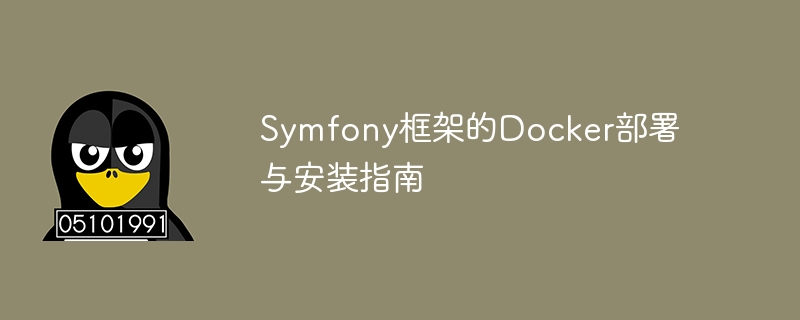

Docker Deployment and Installation Guide for Symfony Framework
Abstract:
Symfony framework is a powerful and popular PHP development framework that provides many convenient Features and tools to speed up the development process. Docker is a widely used containerization platform that simplifies the deployment and operation and maintenance process by packaging applications and their dependencies into containers. This article will introduce how to deploy and install the Symfony framework in a Docker environment and provide relevant code examples.
1. Install Docker
In Linux system, open the terminal and enter the following command to install Docker:
sudo apt-get update sudo apt-get install docker-ce docker-ce-cli containerd.io
2. Create a Symfony project
Use Composer to create a new Symfony project:
composer create-project symfony/skeleton myproject
Enter the project Directory:
cd myproject
Start the Symfony development server:
bin/console server:start
3. Build the Docker image
Create a file named Dockerfile in the project root directory to define the building rules of the Docker image:
FROM php:7.4-apache WORKDIR /var/www/html COPY . /var/www/html RUN apt-get update && apt-get install -y libzip-dev unzip && docker-php-ext-install pdo_mysql zip && a2enmod rewrite EXPOSE 80
Enter the following command in the terminal to build the Docker image:
docker build -t myproject .
4. Start the Symfony project
Enter the following command to create a container named myproject and start the Symfony project:
docker run -d -p 8080:80 --name myproject_container myproject
5. Deploy using Docker Compose
Create a file named docker-compose.yml in the project root directory:
version: '3' services: myproject: build: context: . dockerfile: Dockerfile ports: - 8080:80 volumes: - .:/var/www/html
Enter the following command in the terminal to use Docker Compose to start the Symfony project:
docker-compose up -d
6. End and Cleanup
Enter the following command to stop and delete the container:
docker stop myproject_container docker rm myproject_container
If you no longer need it, you can use the following command to delete the Docker image:
docker rmi myproject
Conclusion:
By using Docker to deploy and run the Symfony framework, we can achieve code portability, environment consistency and rapid deployment. This article provides guidelines and code examples for steps such as installing Docker, creating a Symfony project, building a Docker image, starting a Symfony project, and deploying using Docker Compose. We hope it will be helpful to you in the Docker deployment and installation process of your Symfony project.
The above is the detailed content of Docker deployment and installation guide for Symfony framework. For more information, please follow other related articles on the PHP Chinese website!




